Biodiversity of Freshwater Mussels of the Upper Sangamon River (Illinois): Community Science in Action
| Danelle Haake, National Great Rivers Research and Education Center Sarah Douglass, Illinois Natural History Survey Christy Edwards, Bob Coulter, Missouri Botanical Garden Edward Spevak, Saint Louis Zoo Bruce Colravy, Upper Sangamon River Conservancy |
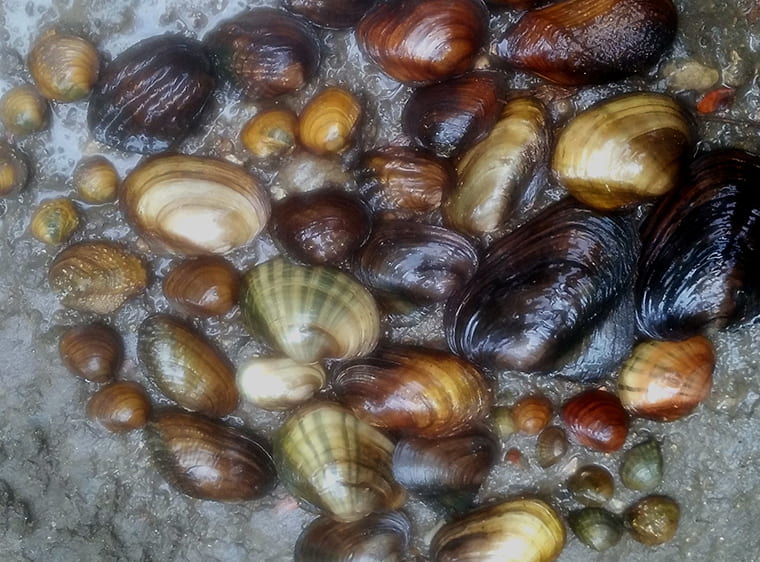
Freshwater aquatic plants and animals are among the species most at risk for extinction worldwide, and mussels are the most imperiled of the freshwater animals in the United States. This Living Earth Collaborative seed grant will help initiate a long-term study of freshwater mussels in the Sangamon River basin in Illinois. The project is envisioned as a collaboration between institutional researchers and citizen scientists who will work together to determine how many mussels and what kinds of them live in the basin; how the mussels grow and how far they spread; the genetic relatedness of different populations of mussels; and how various stressors may be affecting mussels in the watershed. Collaborators will also develop instructional materials that can be used in education and outreach efforts.

Expanding the toolset for chelonian conservation: Understanding the diversity, distribution and dynamics of box turtle microbiomes
| Fangqiong Ling, Washington University, McKelvey School of Engineering Maris Brenn-White, Kathleen Apakupakul, Sharon L. Deem, Saint Louis Zoo |
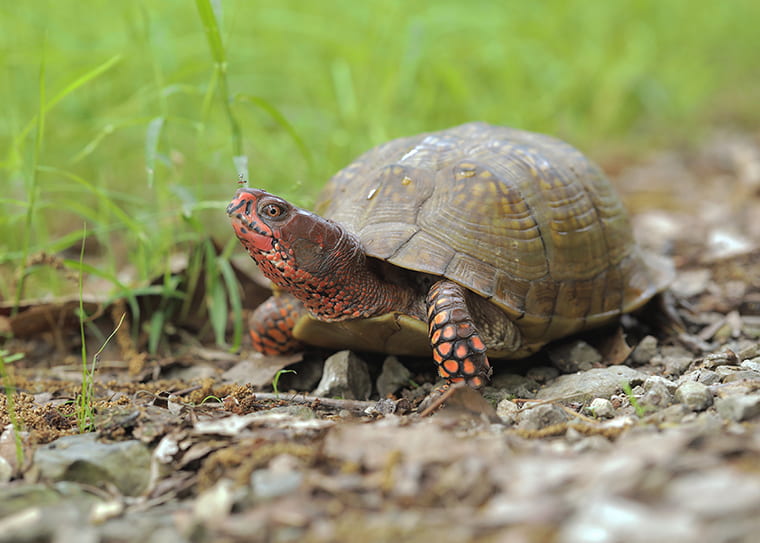
The Saint Louis Zoo Institute for Conservation Medicine has studied the health and movement of free-living box turtle populations at two sites in the Saint Louis area since 2012. With support from the Living Earth Collaborative, researchers will begin a new effort to characterize the native microbiomes of three-toed box turtles and explore how they vary within and between populations. In general, wildlife microbiomes _ the bacteria, archaea, protists and viruses that are found inside and on the body _ are an understudied aspect of biodiversity conservation. For example, researchers are only beginning to understand the impacts of human-caused environmental change on microbiomes. But the uncharacterized microbiomes of wildlife may provide novel tools for conservation. What researchers learn from the microbiomes of populations that thrive in the wild may provide us with candidate microbes andmicrobial consortia that could be used to improve disease resistance, nutrient absorption and ultimately fitness of threatened species and those residing in degraded habitats. The researchers plan to incorporate what they learn into the conservation toolset for this and other chelonian species.

Forest Park Living Lab: Exploring the biodiversity and natural history of one of the world’s great parks
| Joseph Steensma, Washington University, Brown School David Webb, Washington University, Environmental Studies Program in Arts & Sciences Carolyn Cosgrove Payne, Washington University, Environmental Studies Program in Arts & Sciences Anthony Dell, National Great Rivers Research and Education Center Amy Witt, Forest Park Forever |
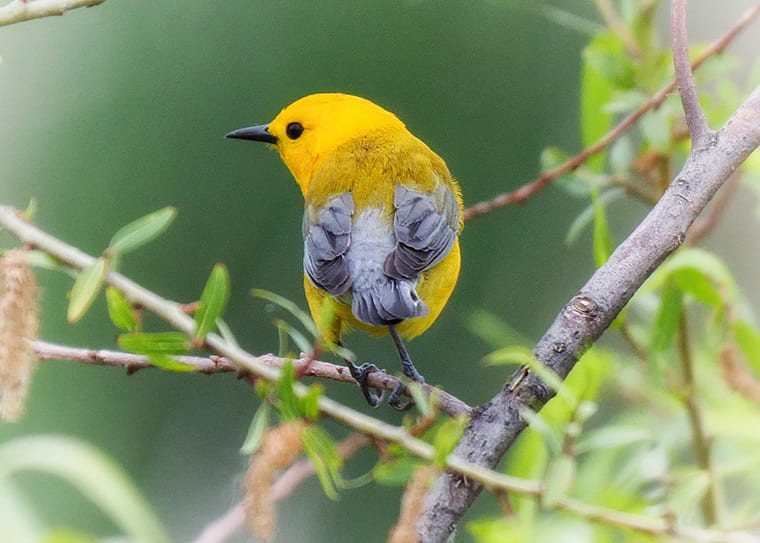
Urban biodiversity and the value that it brings to communities has been overlooked and understudied. This Living Earth Collaborative seed grant project seeks to highlight biodiversity and natural history of Forest Park and the value it brings to our community by engaging students, the community and the natural assets of the park itself in a multimedia exploration. In conjunction with Forest Park Forever, the National Great Rivers Research and Education Center and the Sustainability Exchange at Washington University, collaborators will produce a coffee-table book of art, stories, paintings, photography, poems and other media by Washington University students. Students will lead every facet of this ambitious effort to document the biodiversity of the park that is considered a crown jewel of St. Louis.

Origin and diversification of the flowering plants of the Gulf of Guinea archipelago
| Patricia Barberá, Missouri Botanical Garden Joan Garcia-Porta, Washington University, Department of Biology in Arts & Sciences Nathan Muchhala, University of Missouri-St. Louis Tariq Stévart, Missouri Botanical Garden Michael Landis, Washington University, Department of Biology in Arts & Sciences |
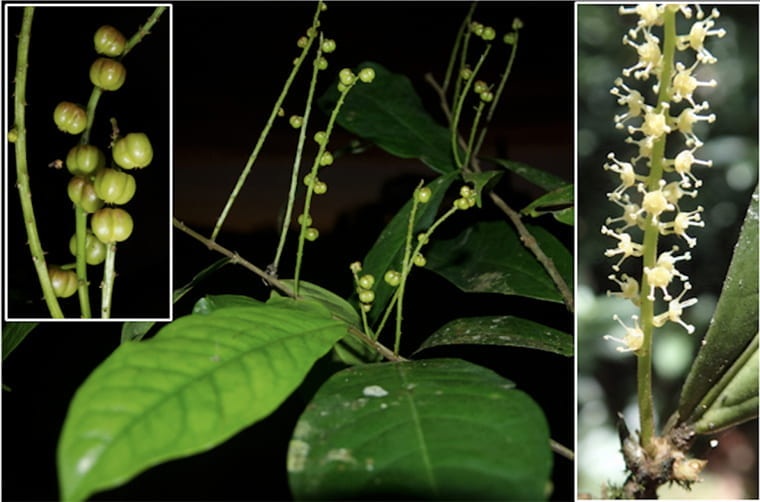
This Living Earth Collaborative seed grant project focuses on one of the least studied island systems in the world: the Gulf of Guinea archipelago, which comprises four volcanic islands located off the west coast of Africa. The islands are hotspots of plant diversity, with more than 190 species found nowhere else in the world. Surprisingly, although animal diversification on the islands has received some attention, very few studies focus on the origin and diversification of the flora of the islands. This project aims to fill the gap, starting by focusing on when three plant clades arrived on the islands and how they spread and diversified. The effort provides an excellent opportunity to advance our understanding of the processes that build and maintain biodiversity and will improve our knowledge of the taxonomy and conservation of the flora of this highly diverse region.

Páramo biodiversity farms: A collaborative conservation project (Colombia)
| Iván Jiménez, Missouri Botanical Garden Derek Hoeferlin, Washington University, Sam Fox School of Design & Visual Arts |
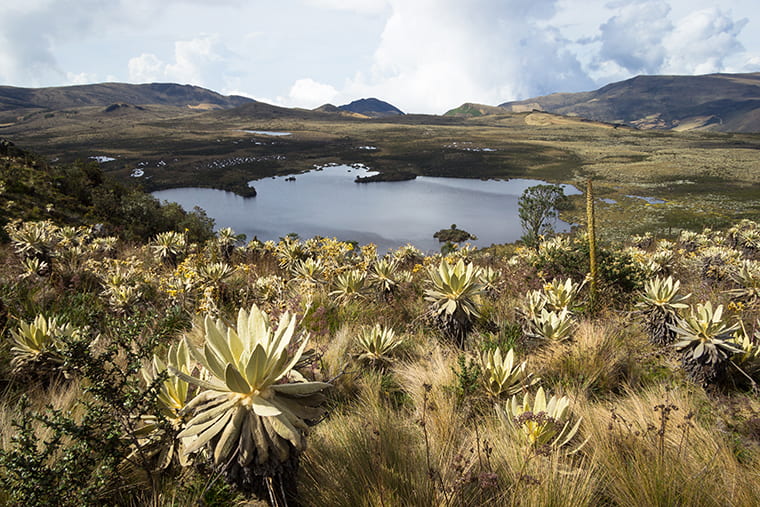
Páramos are high-elevation ecosystems in the tropical Andes Mountains in South America. Considered “strategic ecosystems,” the páramos supply 80% of the water for agricultural, industrial and domestic use in the area; for example, nearly all water for Bogotá is sourced from páramos. In Colombia, the government recently enacted laws that have generated tension between campesinos _ individuals that live in the countryside and have livelihoods based on working the land _ and the cities sourcing water from the páramos, raising concern that the rights of campesinos will not be considered in the efforts to conserve páramos. This Living Earth Collaborative seed grant project will help develop the idea of páramo biodiversity farms. Researchers will explore sustainable economic, architectural and landscape design activities with low environmental impact that are consistent with campesino identity and interests related to understanding, valuing and managing biodiversity. Campesino communities will play a central role in this exploration, as will the investigators’ efforts to decolonize biodiversity conservation and related disciplines.

Socio-economic and cultural adaptation to biodiversity loss and climate change: Analysis and intervention efficacy study in three Madagascar subsistence communities
| Armand Randrianasolo, Nivo H. Rakotoarivelo, Fortunat Rakotoarivony, Missouri Botanical Garden Judi McLean Parks, Washington University, Olin Business School |
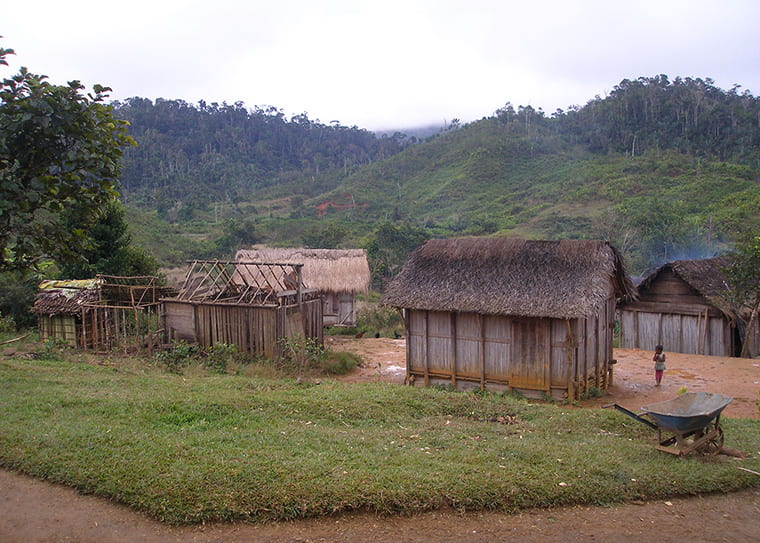
Madagascar is widely recognized for its unique biodiversity and its variety of ecosystems. However, Madagascar is losing its species richness due to increased human pressure, farming practices that cause habitat loss, and the unsustainable extraction of natural and forest resources. This Living Earth Collaborative seed grant project will document how residents in three rural Madagascar communities affected by biodiversity loss and climate change have responded to these negative impacts by making changes in their daily activities, agriculture, traditional ceremonies, handicraft and construction practices, and other plant uses. The researchers will then try to determine how educational interventions can be used to help increase knowledge and understanding of the importance of conserving biodiversity. The collaborators plan to work with local residents to propose conservation strategies appropriate to each local community and forest type.
